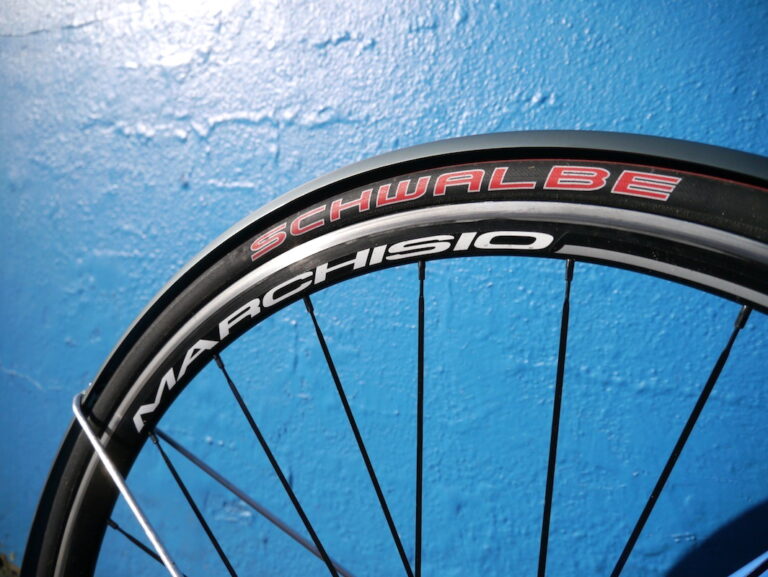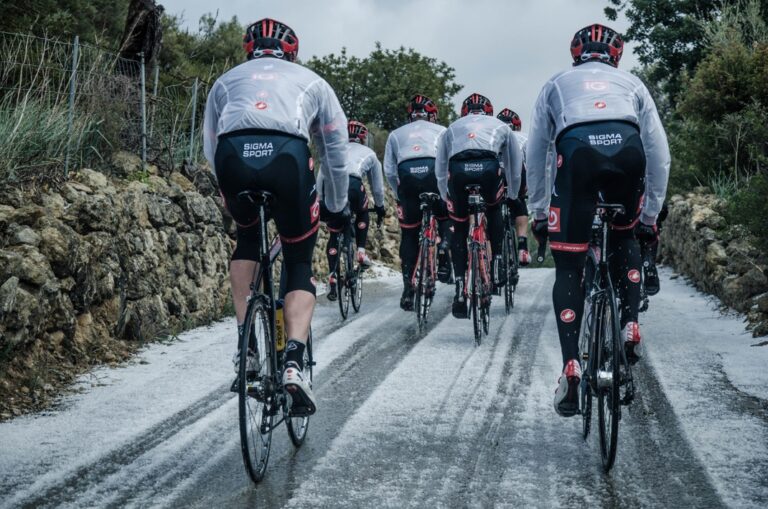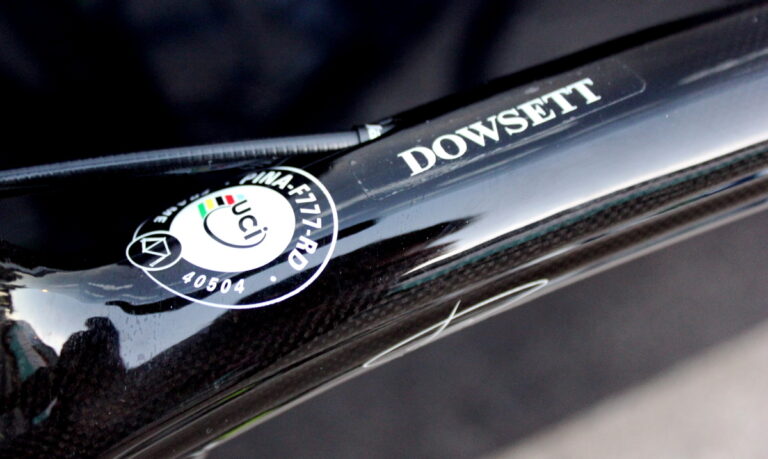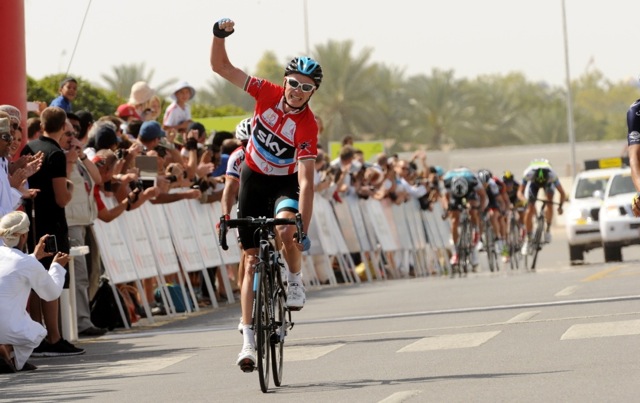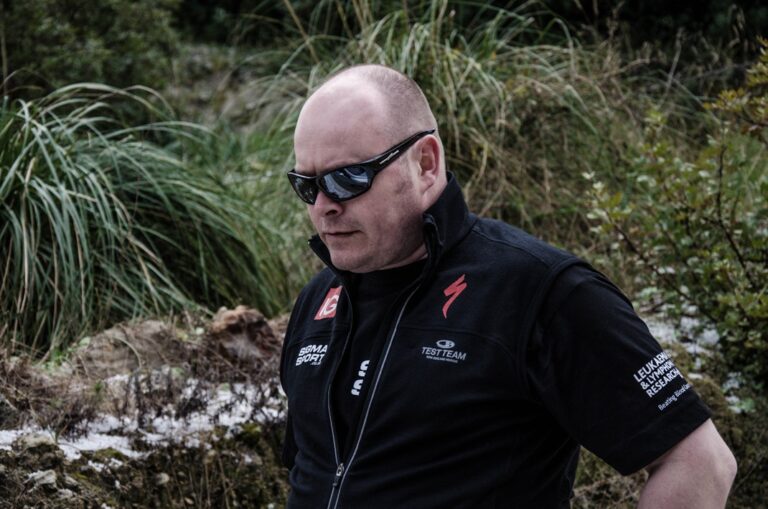The annual Core Bike trade-only show is a chance to keep tabs on new trends and see what old trends are set to make a resurgence.
And the 2013 edition proved no different, with carbon fibre taking its fair share of the limelight, new developments in the disc brake market, and with aluminium and steel enjoying something of a revival.
Aluminium to rival carbon fibre
We briefly told you about Kinesis UK’s new aluminium racing frame back in October when chief designer Dom Mason pulled it out from behind the firm’s stand at the Cycle Show. Here’s the – nearly – finished version. Ok, it’s actually still still in its prototype guise, so ignore the stickered decals. The final model will have an anodised finish (in orange/black and black/metallic grey) with laser etched decals. Kinesis are ready to start production, however, will stock expected to arrive in a couple of months time.

Mason is a big believer in aluminium and, having cut carbon fibre out of the Kinesis range completely, has set about developing an aluminium racing frame which can rival carbon. The Aithein, part of the Racelight range and two years in development, is the result.
“Carbon fibre is expensive and, as a small company, it’s hard for us to keep up with the latest developments,” Mason told us. “It interests me a lot more to do a bike like this. This really pushes what you’re able to do with welded together tubes and it uses features which have been developed for carbon frames.”

That means the Aithein has a tapered headtube and BB386EVO bottom bracket shell. Carbon fibre traditionally has two main benefits over aluminium: stiffness and weight. The Superplastic Formed (SPF) seattube, which has a pronounced flattened profile at its junction with the bottom bracket, is key to the Aithein’s success as it increases the core stability of the frame in order to shed weight from the rest of the frame.
The frame weighs a claimed 1,200g, while the bike on display at Core, equipped with Shimano Ultegra and Reynolds wheels, weighs just 6.7kg. That’s under the UCI weight limit – with an aluminium frame. The frame and fork (full carbon, tapered steerer, claimed weight 330g) will cost £649.99 and Thomas reasons that the inherent affordability of aluminium will allow you to splash a little more cash on the rest of the build, but there are also early plans in the pipeline for a Shimano 105 build.
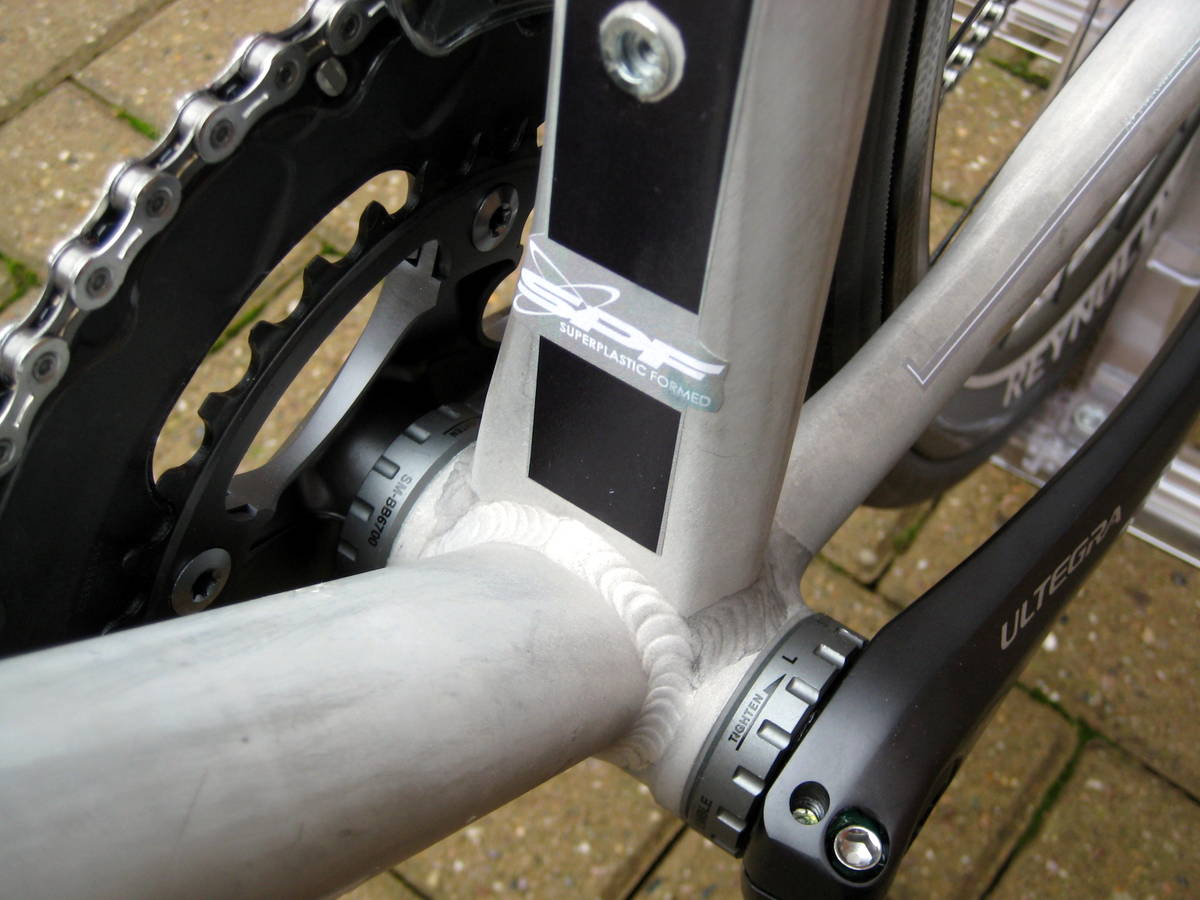
“The idea of the bike is something which is punchy, climbs really hard, descends really well, goes around corners really nicely, and is really fast,” said Mason. “It’s an aggressive bike, not a sportive bike. It’s a fast bike for thrashing around the lanes. It’s not designed for all-out comfort but when you stomp on the pedals it’s meant to go fast uphill.” Sounds fun, doesn’t it? We’ve put our name on the list for one to test.
Do-it-all
We’ve seen a big rise in the number of do-it-all bikes; machines designed for commuting, touring, cyclo-cross racing, winter training and just about everything in between. The Tripster ATR is Kinesis UK’s ultimate do-it-all machine.

ATR stands for Adventure, Tour, Race that that gives a clue to its raison d’etre. The titanium frame, made in the same factory as the Gran Fondo Ti reviewed on RCUK last year, has been given a new geometry with comfort and stability in mind, so the bottom bracket is a little lower for stability, the toptube a little longer to give huge clearance for mudguards and 40mm tyres, and the angles a little slacker for comfort. And, of course, it’s also got disc brakes.
“It’s designed for going a long way in comfort,” said Mason. “You can gravel race it, ride round the world on it, get a rack on it.” It’s no slouch though, and the fork is full carbon with a tapered steerer to give it a Tripster a performance edge. “It’s not designed to do everything and be a bit dull,” he added. “It’s also got a sporty edge to it.”
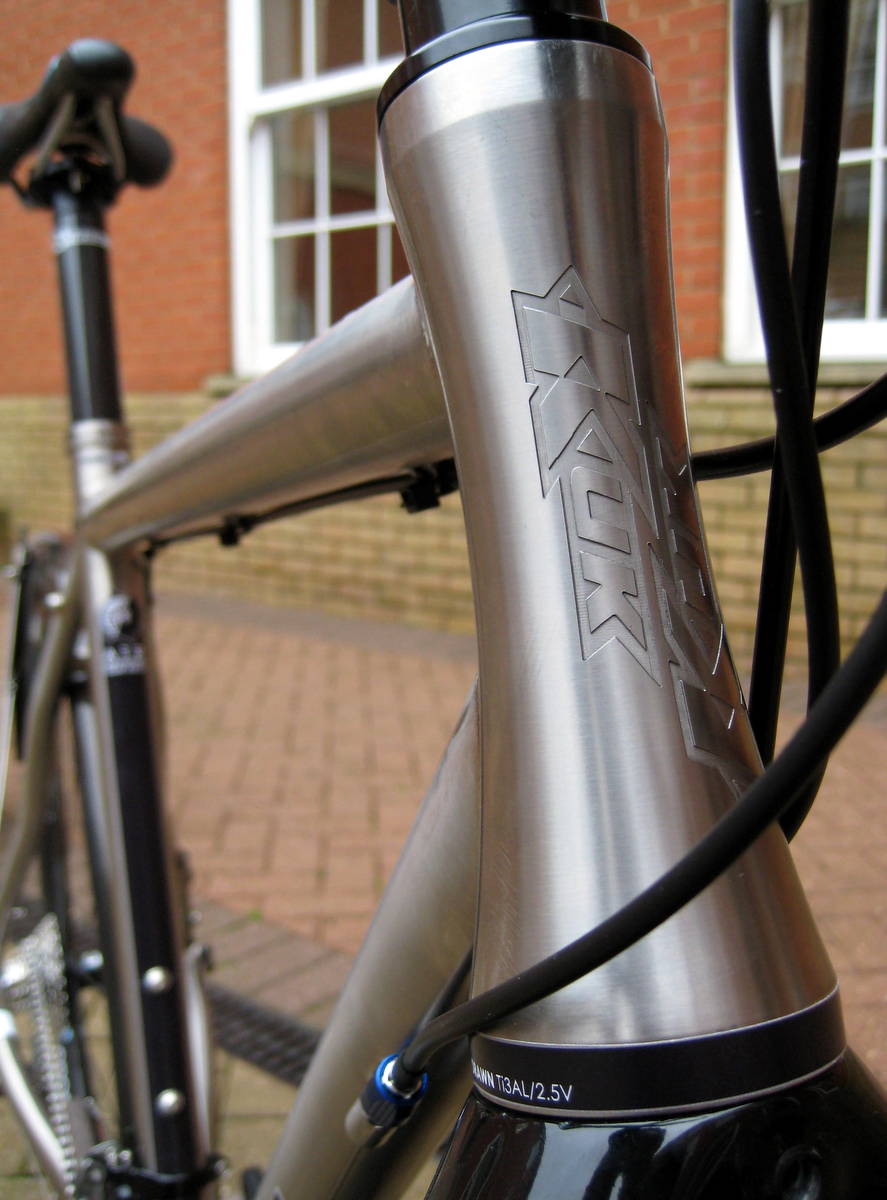
The Tripster ATR will cost £1,449.99 for the frameset (with a 530g carbon fork) or £2,349.99 for the build pictured above.
Disc brakes
Kinesis have also been working hard on updates to the existing range. The Gran Fondo Ti will get the same stunning billeted headtube as the Tripster ATR, as well as the new fork found on the TK3, capable of taking long-drop brakes, in order to turn it into a proper all-year machine.
The Racelight TK3, which currently serves as RoadCyclingUK’s winter bike, is in-line to get a disc brake upgrade for model year 2014. It’s not an easy upgrade as Thomas will have to design a completely new fork, capable of running disc brakes and the long-drop brakes which make the TK3 so suitable for the British winter. “It’s harder to develop that than a new frame,” said Mason.
“Whether people want disc brakes on road bikes, I don’t know, but for a winter bike like the TK3, an all-terrain bike like the Tripster ATR, or a cyclo-cross bike, then it makes perfect sense.”
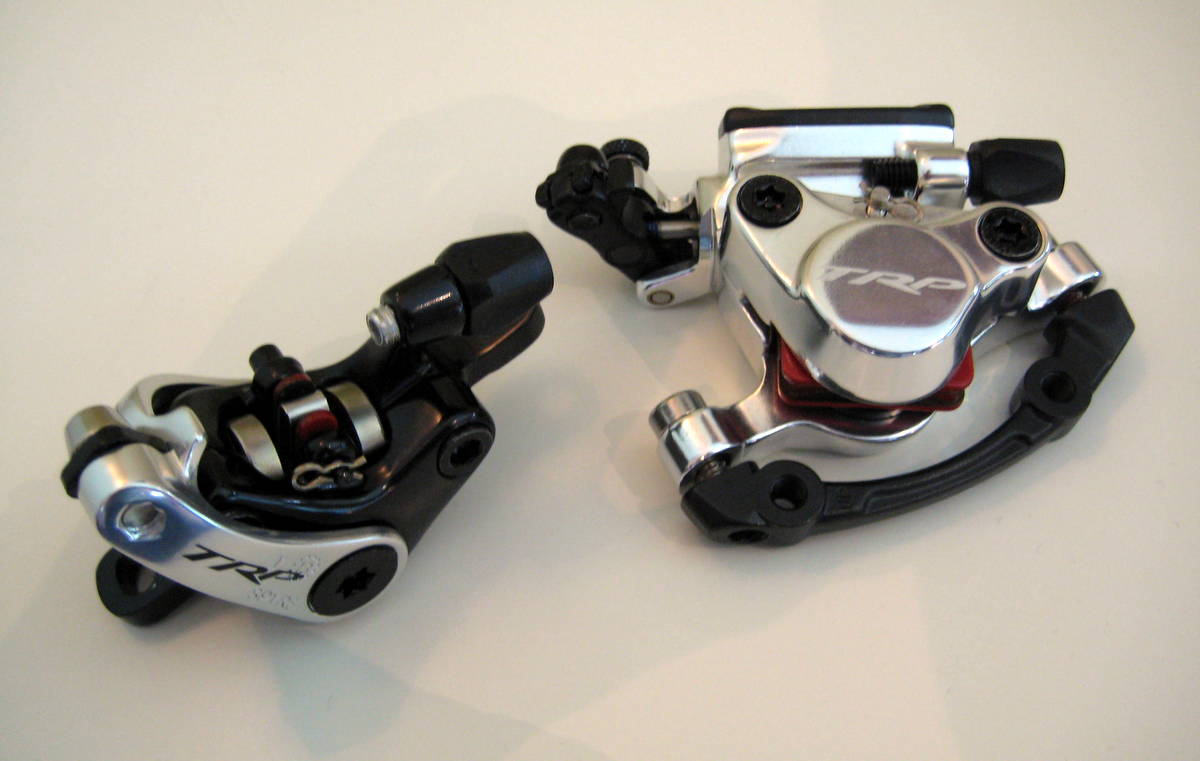
By the time a disc-ready TK3 is ready for production, an in-hood hydraulic may be available, but TRP (which, like Kinesis, is part of the Upgrade Bikes brand stable) have developed a neat cable disc brake solution which is more likely to feature on the upgraded machine.
The Spyre (pictured above, left) has an arm which engages two pistons, thereby moving two pads on either side of the rotor. So, rather than flexing the rotor to engage with a brake pad, this should allow for a more even distribution of braking forces and a smoother feel. It also means there’s no mechanical linkage protruding from the side, so there’s more clearance for mudguards and racks.
It’s a very interesting development and one we look forward to hearing more about. In theory, it should provide powerful, well modulated braking through mechanical disc brakes, suitable for cyclo-cross and road riding.
Also new from TRP is the HY/RD; a cable-actuated hydraulic disc brake caliper. It’s a hybrid setup which allows you to use regular cables from the lever to the brake, while the master cylinder is then bolted directly next to the caliper.
And more disc brakes
A disc-equipped road bike is a guaranteed head-turner at any trade show but we didn’t expect Identiti, a brand with its roots in dirt jump bikes, to make the leap at Core.
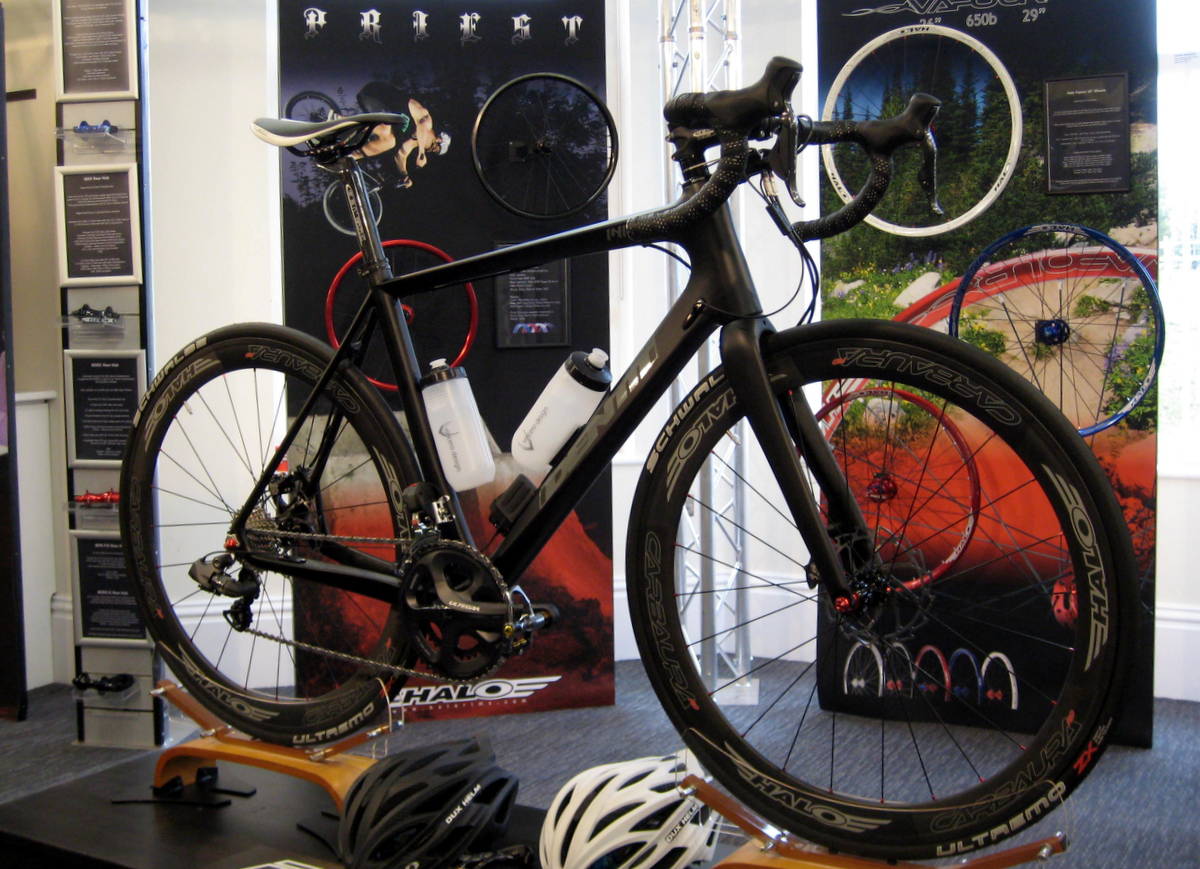
The frame, Identiti’s first foray into the road market and therefore dubbed the Initial-D, is a carbon fibre affair and uses Hope’s V-Twin converter kit and hydraulic Hope X2 calipers.
Claimed weight is approximately 1.5kg for the frame and fork, priced at around £900 when in becomes available in 2014. This show pony was built up with Shimano Ultegra Di2 and Halo Carbaura Disc wheels for an overall claimed weight of 7.6kg.
Steel is real
That’s a lot of technology right there but there was still room for a healthy dose of steel at Core in the shape of the new Road Logic frameset from Ritchey. Tom Ritchey built his first road frame 40 years ago in his parent’s garage and the Road Logic is unashamedly old school, albeit with many of the details gleaned from all those years of experience.
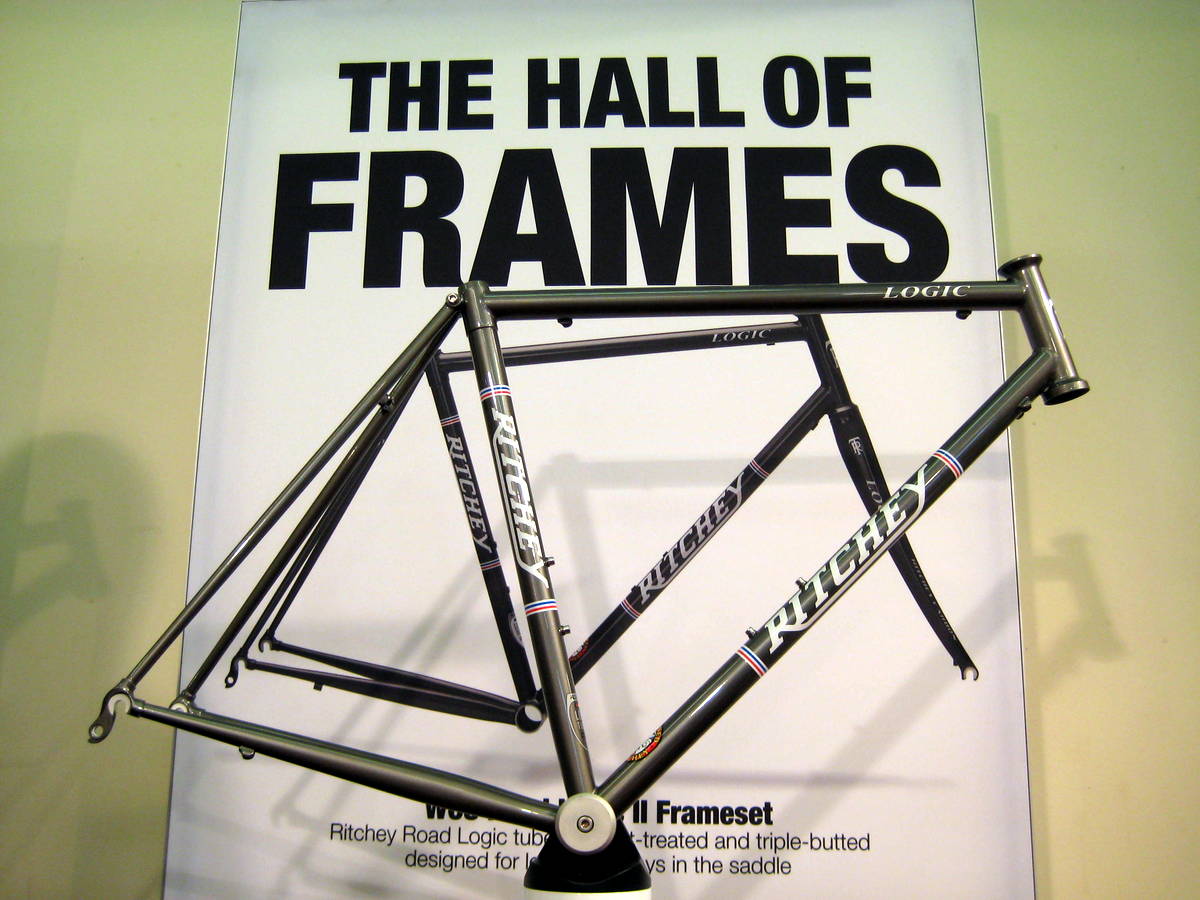
The Road Logic is, in Ritchey’s words, designed for “long, epic days in the saddle”, rather than raw speed. The heat-treated and triple-butted frame has short-butted sections optimised for TIG welding in order to save weight and improve ride quality.
Ritchey’s proprietary headtube uses standard drop-in bearings and saves 80g over a standard head tube design. The frame has clearance for 28mm tyres and the size 55cm version has matching 73.5 degree head and seattube angles, and a claimed weight of 1,769g.

The Road Logic frameset costs £950 for the frame, 345g carbon fork and Ritchey WCS headset. Otherwise, the firm also had their Swiss Cross cyclo-cross frame on display which now has a revised geometry to offer race-ready handling and improve responsiveness. Like the Road Logic frameset, it can be yours for £950.

